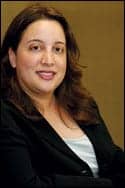
|
As everyone in the hearing health care field knows—or should know—May is designated as Better Hearing & Speech Month. I realize that it seems as though every health issue or other topic claims a special day, week, or month as its own, but even so, this particular designation can—or should—serve as a time to take a look at what you, as a hearing health care professional, are doing to bring awareness to the public about hearing loss and hearing protection.
In Los Angeles, the John Tracy Clinic—in collaboration with AltaMed Health Services Corp, St. John’s Well Child and Family Center, South Central Family Health Center, and Venice Family Clinic—used Better Hearing & Speech Month to launch Baby Sound Check®, a model infant hearing screening program. Through the program, infant hearing screening has been added to each child’s medical chart alongside other routine “well-baby” tests and measurements at five community clinics in Los Angeles. “As many as 30% to 50% of babies who do not pass hospital screenings at birth slip through the cracks,” says John Tracy Clinic audiologist Christine Gilmore Eubanks, PhD, director of the program. “This situation has created a critical need to test babies at community clinics where many parents already take their children for their regular checkups.”
Hearing loss is the most common disability at birth. Early detection of a hearing loss and subsequent intervention are of the utmost importance for the development of the brain’s auditory system, speech and language skills, and even social skills. As Karl R. White, PhD, director of the Utah-based National Center for Hearing Assessment and Management, told those in attendance at the program’s launch, before the implementation of national newborn hearing screenings, on average, a child was 2 1/2 to 3 years old before he or she was identified as having a hearing loss. Because of that, on average, many Deaf adults could read at only the third-grade level. While there were exceptions, “on average, Deaf children in this country have struggled,” White says.
John Tracy Clinic audiologists are conducting extensive training and orientation on performing the hearing screenings. The screening equipment being used will assess children’s inner- and middle-ear functions. Children suspected of having hearing loss will be referred to the John Tracy Clinic for free, comprehensive diagnostic evaluation, appropriate referral, and follow-up.
During its first 3 years of operation, Baby Sound Check is expected to assess and monitor the hearing health of more than 10,000 children at participating clinics—and thousands more as the program becomes self-sustaining through federal reimbursements. The program is designed as a model for other community clinics in the Los Angeles area and, eventually, across the country. “We want this to be something that other people can do,” Eubanks says.
To find out more about the launch of Baby Sound Check, read HPR’s coverage of the event in the news section of our Web site.

Danielle Cohen





